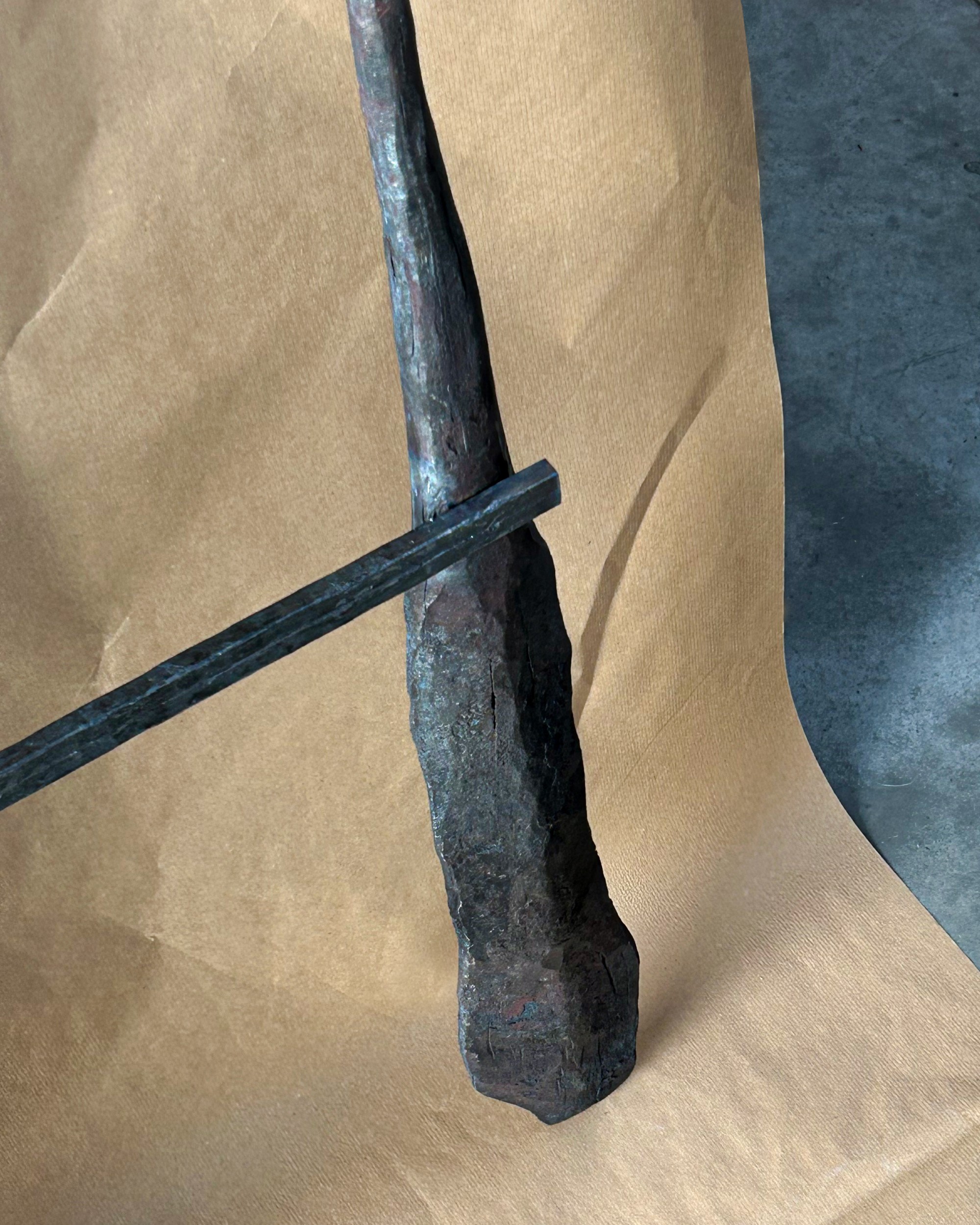Atelier François Pouenat x Ombre • © Victor Fleury Ponsin
Even as early as the 19th century, Viollet-le-Duc made the following comment in his Medieval Encyclopedia: “For these blacksmiths of the 12th and 13th centuries, iron was seen as a soft material that was easy to weld like wax or lead. Today, you would be hard pushed to find a few very rare workers who can shape these kind of objects that used to be commonplace.”
Used by blacksmiths – once called “smiths” – pure iron was slowly replaced by steel, which is a mixture of iron and carbon. This led to a profound transformation in the world of hot metal working. The methods changed and many old techniques were lost. Indeed, the relationship with metal itself changed, to the point where creators now interpret it as a cold and harsh material. On the contrary, iron is a fibrous material like wood. We can see veins that organically conform to the shape of the piece that has been formed. A parallel can also be drawn with glassmaking. In both cases, there is the graceful interplay of bodies and hands working on a hypnotic material, that is incandescent.
With the disappearance of iron and its intrinsic sensitivity, the craftsman has lost part of his know-how, and the designer has lost part of his design skills.
While steel is awkward and rigid, even in fire, iron can be easily finished, shaped, split and welded. Malleable and obliging, it lends itself to being shaped. It adapts to movements, fire and the craftsman’s hand, bringing the know-how of the forge back to life. Because of its appearance, its colours and its ability to be shaped, iron is an exceptionally versatile material. I truly believe that we will be able to breathe new life into this material by immersing ourselves in its history and conducting certain experiments in the workshop.
By searching through the archives, as well as certain books describing ancient techniques and the accounts of master craftsmen, my Ombre and l’Atelier François Pouenat agency rediscovered some forgotten techniques, e.g. forge welding. By heating the metal until it is “white hot”, two pieces of pure iron can be welded together simply by striking one against the other. Using this technique, we can rediscover various known assemblies, such as “end to end”, “wolf jaw” or even “chamfer”, giving them a fragile, magical appearance.
Indeed, ironwork was once an object of fascination for the most powerful kings, e.g. Louis XVI and François I. Forge welding gave iron a magical dimension, which can still easily be perceived today. Iron is a living material. It works with the craftsman, but also with the creator of objects or spaces.
Although designs using metal have gradually become harder and less elaborate producing harsh and austere results despite its properties, creators must re-appropriate iron in order to present the more sensitive qualities of the metal.
In the same way that the computer has influenced our way of drawing ever straighter and more uncompromising lines, steel has impoverished the designer’s style. Hot-formed parts, still mainly made of steel, place a limit on what the blacksmith can do. Were it not for the limitations of steel, the creator could draw smoother, more sincere lines with pure iron. The roughness and the veins of iron as well as the softness of its curves are all qualities that can add to the designer’s palette and give his work a touch of randomness that is so precious for expressing the artist’s sensitivity.
So, it is not only up to the craftsman to rediscover this material in order to preserve the expert knowledge; It is also up to the creator to embrace it, to go to the workshops and observe this living molten material, and then create designs that restore its original image imbued with warmth. •
